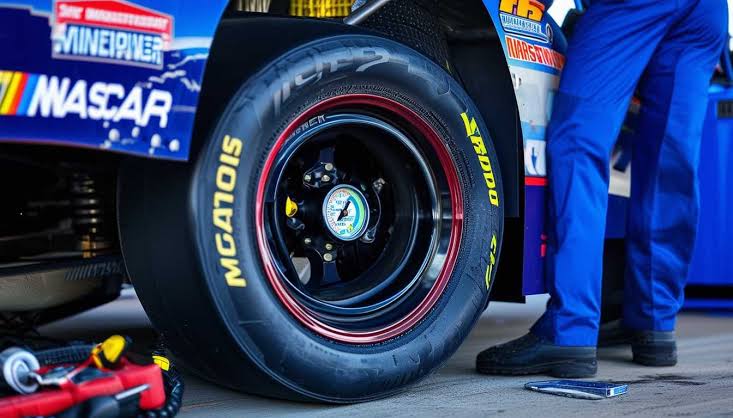“If they tell me that enough, I’ll start to believe them,” LP chief said after Saturday’s race in Bristol. Goodyear firmly maintained that the tires used were identical to those in the spring.
However, the outcomes were drastically different—while tires blew out after 50 laps in the spring race, they lasted for 200 laps in the fall. This discrepancy has caused some NASCAR veterans, including Richard Childress, to raise their eyebrows.
What exactly happened in March may now rank among NASCAR’s biggest unsolved mysteries. Either that or Goodyear is withholding information about a subtle adjustment that made all the difference. Childress leans toward the latter theory as he dives into the Bristol puzzle.
Richard Childress has voiced his doubts about Goodyear.
When the tire degradation occurred at Bristol Motor Speedway in March, it left everyone puzzled. Fans, drivers, and Goodyear executives alike were left wondering what went wrong. The prevailing theory was that the use of resin on the concrete track, instead of PJ1 compound, caused the rapid tire wear.
However, the same method was employed before the Bass Pro Shops Night Race—and Kyle Larson dominated, leading 462 of the 500 laps. Minimal lead changes and a lack of chaos drained Bristol of its usual excitement.
As a result, many NASCAR experts are skeptical of Goodyear’s explanation. Richard Childress has recently joined that chorus of doubters, suspecting that Goodyear is concealing some detail about the tire situation. In an interview with Sportsnaut, he remarked, “I don’t know if they changed the tiniest little thing in the tire and didn’t tell us, but that’s sometimes how it works.”
We do know that resin was applied before practice, and by then, it was evident that the phenomenon from March wasn’t repeating. NASCAR eventually applied PJ1 Trackbite to the bottom of the track just hours before the race began.
Childress isn’t alone in his skepticism; even the winning crew chief has admitted that the mystery remains unsolved.
After Goodyear’s unexpected success at Bristol, efforts were made to understand the situation. Tests were conducted in July at the World’s Fastest Half-Mile with six Cup Series drivers. Goodyear also experimented with alternate spring tires during the All-Star Race and at Richmond. However, none of these efforts recreated the conditions seen at Bristol in the spring.
Even after Kyle Larson’s victory at BMS on Saturday, his crew chief, Cliff Daniels, echoed Childress’ view on the mystery. “I think it would be very hard to recreate the spring again because of the element of surprise. I do think it’s a real thing at the concrete tracks.”
Stewart-Haas Racing crew chief Drew Blickensderfer also expressed his bewilderment. “The tire tests they did here with the 14 car, it was just like March. 50 laps in, maybe, before you had cords on both right sides. So, we came here expecting that, and lo and behold, we had 45 minutes of practice, and for 40 minutes of it, people were running the top.
We ran 70 straight laps with no issues.” He continued, “We could go 120 laps with no issues. Not sure what is completely different, but it’s not what … everybody expected.”
Clearly, Goodyear and NASCAR have created a cloud of confusion in the Cup Series garage. At this point, any theory could be true, including Richard Childress’ suspicion that there’s more to the story.



















































